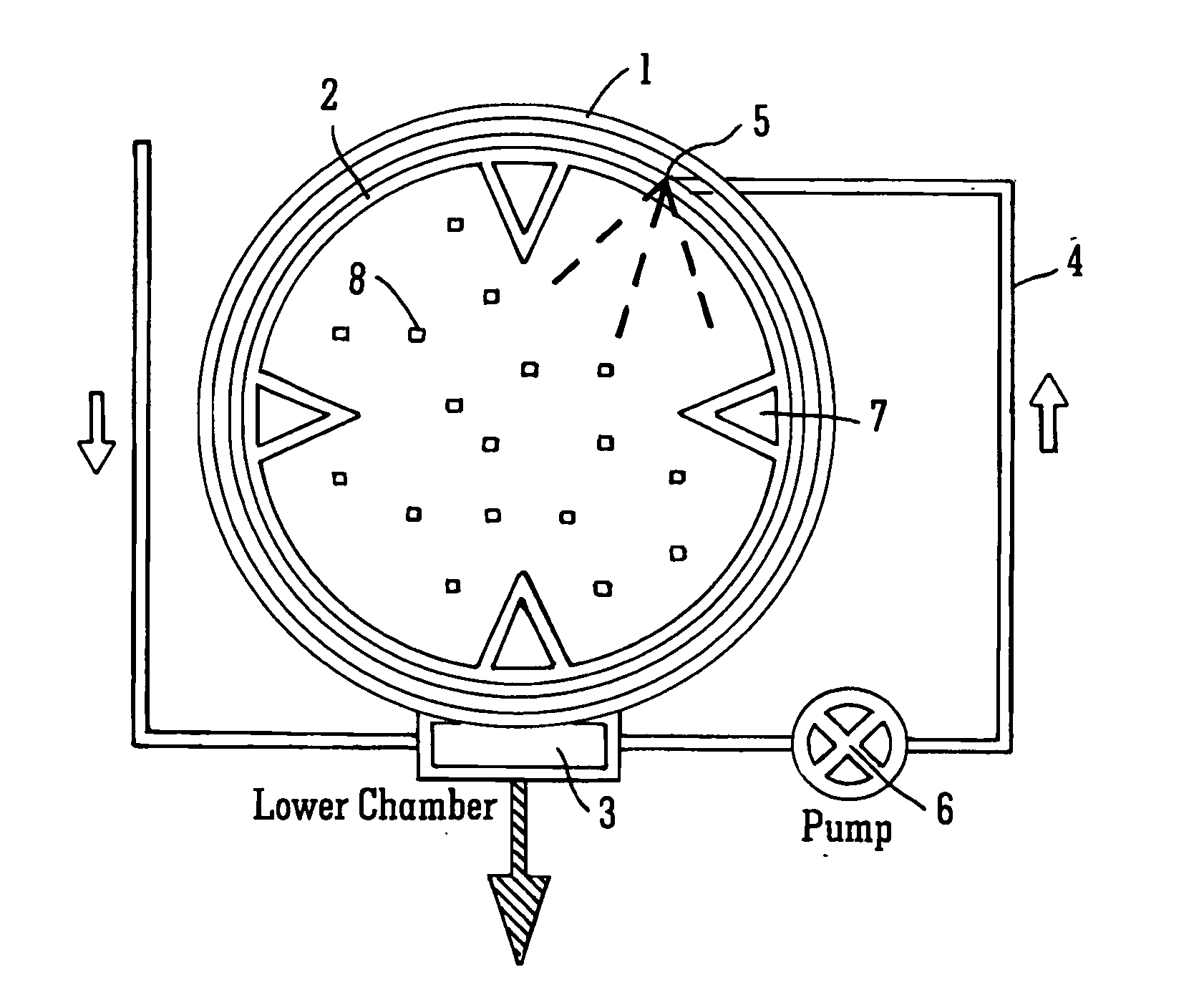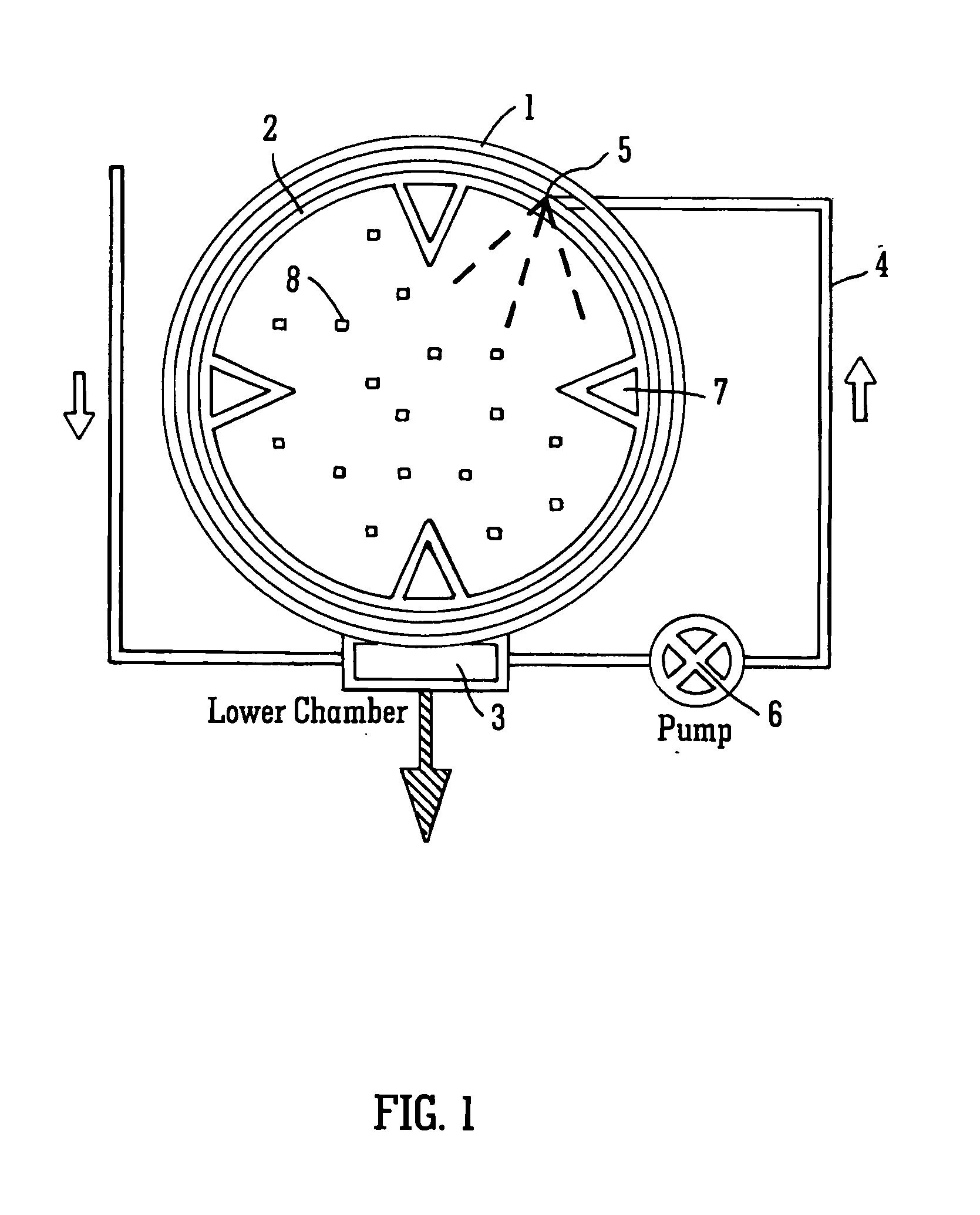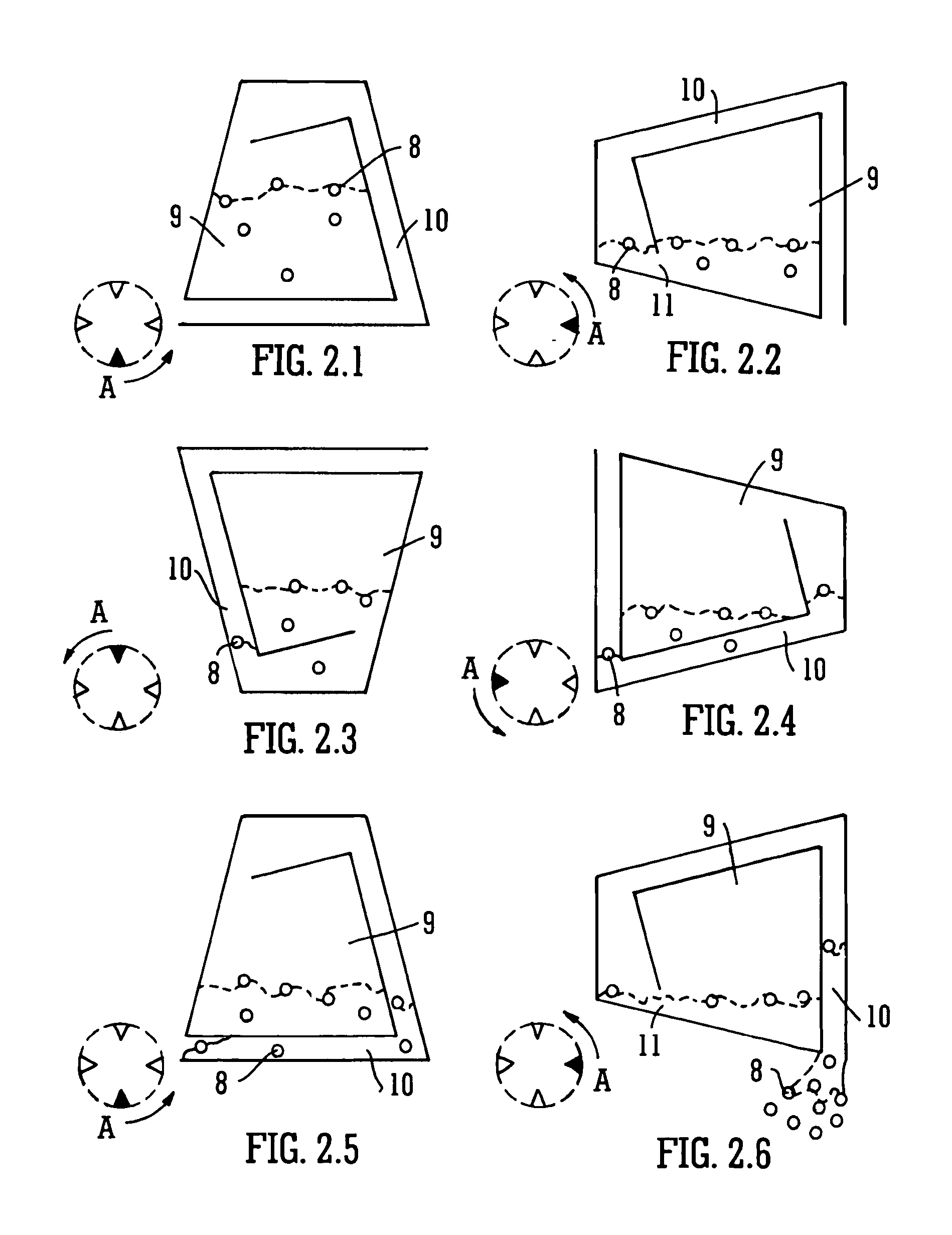New cleaning apparatus and method
- Summary
- Abstract
- Description
- Claims
- Application Information
AI Technical Summary
Benefits of technology
Problems solved by technology
Method used
Image
Examples
example 1
[0171]Cylindrical dry beads (average dimensions: long axis diameter 4.22 mm, short axis diameter 3.5 mm, height 3.97 mm) of SABIC® PP (polypropylene) grade 575P were added to the drum of a washing machine according to the invention which incorporated storage compartments in the lifters on the inner surface of the drum. The drum was rotated in clockwise rotation until no further beads were collected by the lifters. Surplus beads in the drum were removed, and the drum was then rotated in an anti-clockwise direction until all the beads had been emptied from the lifters. The beads released in this manner from the lifters were then collected by vacuum and weighed, and the bulk volume was defined.
[0172]A wash load was rinsed and spun in a BEKO® domestic washing machine (Model WM5120W), then weighed to check its water content. Beads were then mixed with the damp wash load in a large container, and the wash load and beads were loaded into the drum of the apparatus of the invention, which wa...
example 2
[0175]The procedure of Example 1 was repeated using spherical Nylon 6,6 beads of diameter 4.5 mm (as supplied by Hoover® Precision Products), and the following results were observed:
Mass of Dry Wash Load3kgMass of Wash Load after Rinse and Spin4.57kgBead Mass3.6kgBead Volume5.3LBead Mass in Clothes / Drum after Cycle0.02kgBead Mass recovered from Lifters after Cycle3.58kgBead Mass trapped underneath Lifters0kg% Beads captured in Lifters during Cycle99.4%Mass of Beads not captured by Lifters0.02kgNumber of Beads per kg18140Number of Beads not captured by Lifters363
example 3
[0176]The procedure of Example 1 was repeated using cylindrical PET 1101 beads (average dimensions: long axis diameter 3.01 mm, short axis diameter 2.23 mm, height 2.11 mm—as supplied by INVISTA® Polymer & Resins) and the following results were observed:
Mass of Dry Wash Load3.08kgMass of Wash Load after Rinse and Spin4.65kgBead Mass4.86kgBead Volume5.3LBead Mass in Clothes / Drum after Cycle0.097kgBead Mass recovered from Lifters after Cycle4.67kgBead Mass trapped underneath Lifters0kg% Beads captured in Lifters during Cycle96.1%Mass of Beads not captured by Lifters0.12kgNumber of Beads per kg63261Number of Beads not captured by Lifters7465
[0177]It is apparent from these studies that the apparatus and method of the present invention provides for very high efficiency of both removal of the beads from the washload and collection of these beads in the storage compartments of the lifters
PUM
 Login to View More
Login to View More Abstract
Description
Claims
Application Information
 Login to View More
Login to View More - R&D
- Intellectual Property
- Life Sciences
- Materials
- Tech Scout
- Unparalleled Data Quality
- Higher Quality Content
- 60% Fewer Hallucinations
Browse by: Latest US Patents, China's latest patents, Technical Efficacy Thesaurus, Application Domain, Technology Topic, Popular Technical Reports.
© 2025 PatSnap. All rights reserved.Legal|Privacy policy|Modern Slavery Act Transparency Statement|Sitemap|About US| Contact US: help@patsnap.com



